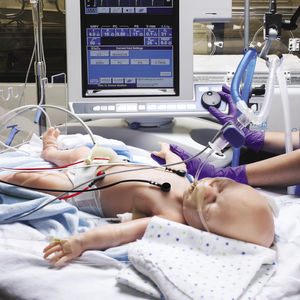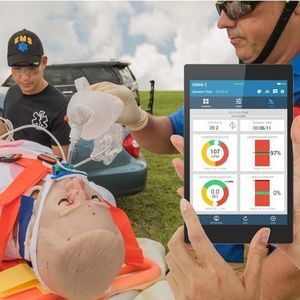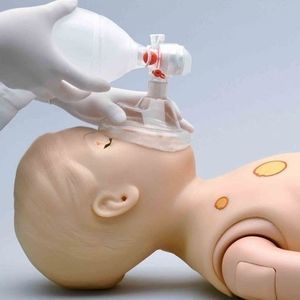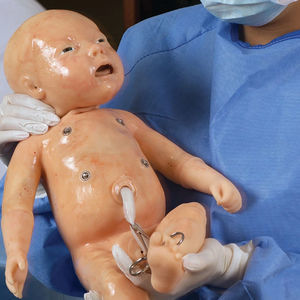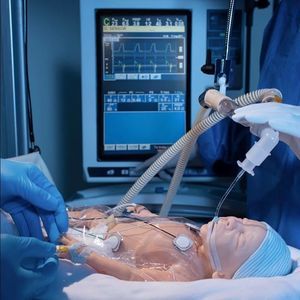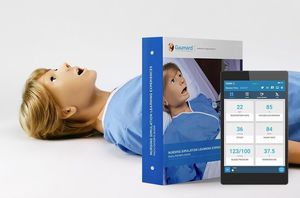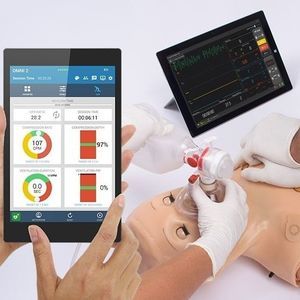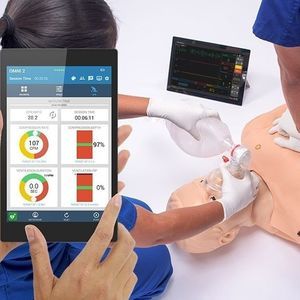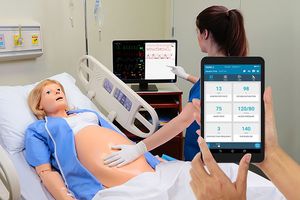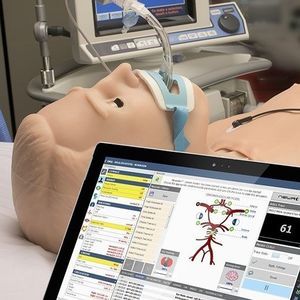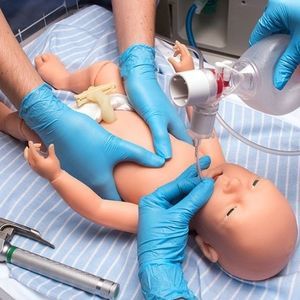
Auscultation patient simulator HAL® S3000palpationintubationmonitoring

Add to favorites
Compare this product
Characteristics
- Procedure
- palpation, intubation, cricothyrotomy, tracheostomy, auscultation, monitoring, ECG, for resuscitation, CPR, infusion, for cardiopulmonary resuscitation
- Application
- nursing care, for intensive care
- Type
- adult
- Form
- whole body
- Configuration
- manikin set
- Options
- with vital sign monitor
Description
HAL's advanced design and tetherless technology eliminate external tubes, wires, and compressors. HAL operates continuously during transport so that training can occur in the working environment. Rush HAL from the accident scene to the ER or the ICU while care providers diagnose and treat his condition using real monitoring and resuscitation equipment. HAL® smoothly transitions between physiologic states in response to commands from a wireless PC.
HAL® S3000 | A Proven Tetherless Patient Simulator:
HAL® is easy to use and fully functional during transport with wireless control and documentation. His electrically conductive skin regions allow the use of real equipment to obtain his ECG, perform temporary pacing, cardiovert, and defibrillate.
For more information, visit https://www.gaumard.com/products/s3000.
To find a Gaumard authorized distributor, visit https://www.gaumard.com/find-sales-manager?option=international
VIDEO
Catalogs
Trauma-HAL-S3040
8 Pages
Gaumard Catalog 2024
292 Pages
Related Searches
- Gaumard training simulator
- Gaumard general care simulator
- Control software
- Training manikin
- Upper body simulator
- Surgical simulator
- Scan software
- Gaumard patient simulator
- Education software
- Portable simulation trainer
- Lower body simulator
- General care training manikin
- Vital sign simulator
- Simulation software
- Emergency care simulation unit
- Woman simulator
- Anatomy simulation trainer
- Catheterization simulator
- Palpation simulator
- Teaching simulator
*Prices are pre-tax. They exclude delivery charges and customs duties and do not include additional charges for installation or activation options. Prices are indicative only and may vary by country, with changes to the cost of raw materials and exchange rates.









